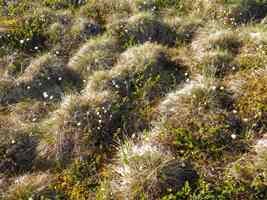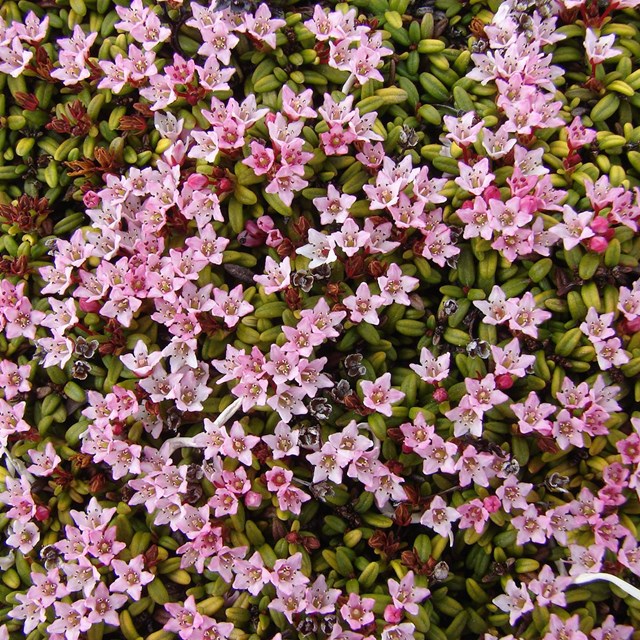
NPS Photo 
NPS Photo / Kathi Quinn Grasses and sedges dominate the tundra of Bering Land Bridge National Preserve. They play a critical role in local ecology by supporting the food web and nutrient cycle, while also providing habitat for small rodents, insects, and birds. Across the state of Alaska, sedges represent the largest plant genus, with over 150 species, subspecies, and varieties recognized. Perhaps the most recognizable tundra sedge is cottongrass, named for the fluffy part that develops on the end of its tall stalk after fertilization. There are 14 species of cottongrass in the state, which are often difficult to distinguish between due to variations within species and hybridization. Most have round stems, though a few have triangular stems, which are reported to grow between 1 to 2 feet. The most common is Tall Cottongrass (Eriophorum angustifolium). They thrive in damp tundra environments and often make up the round tussocks that dot the landscape and make summer tundra hiking such a challenge! Though they have a short growing season, grasses and sedges release their seeds in the fall where they will survive under the snow all winter and sprout again during spring thaw. More Plants at Bering Land Bridge
|
Last updated: December 10, 2025






